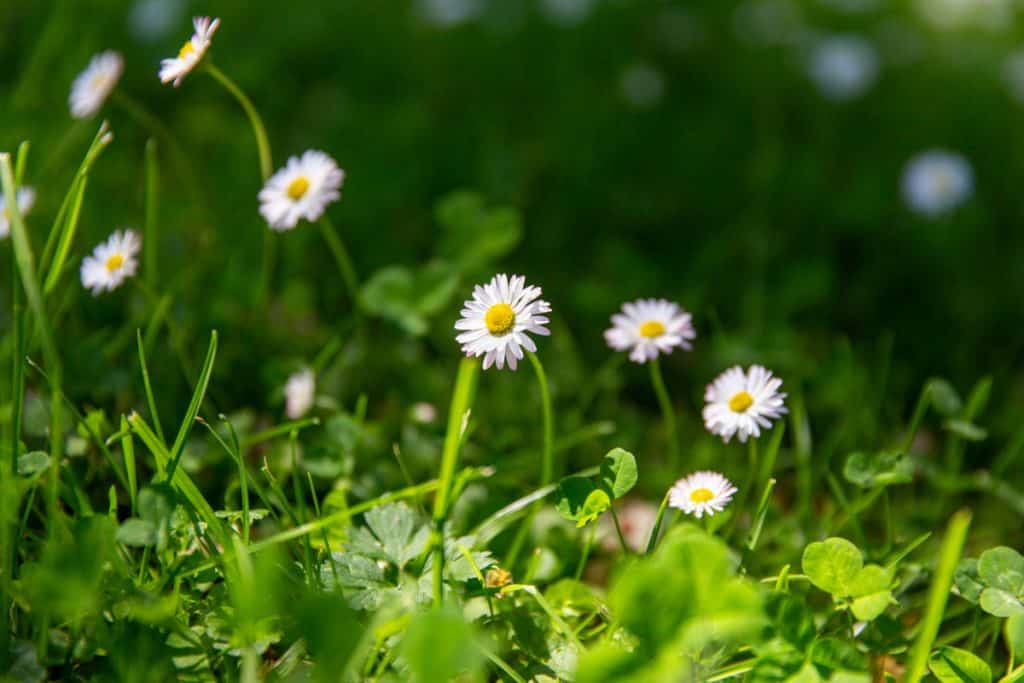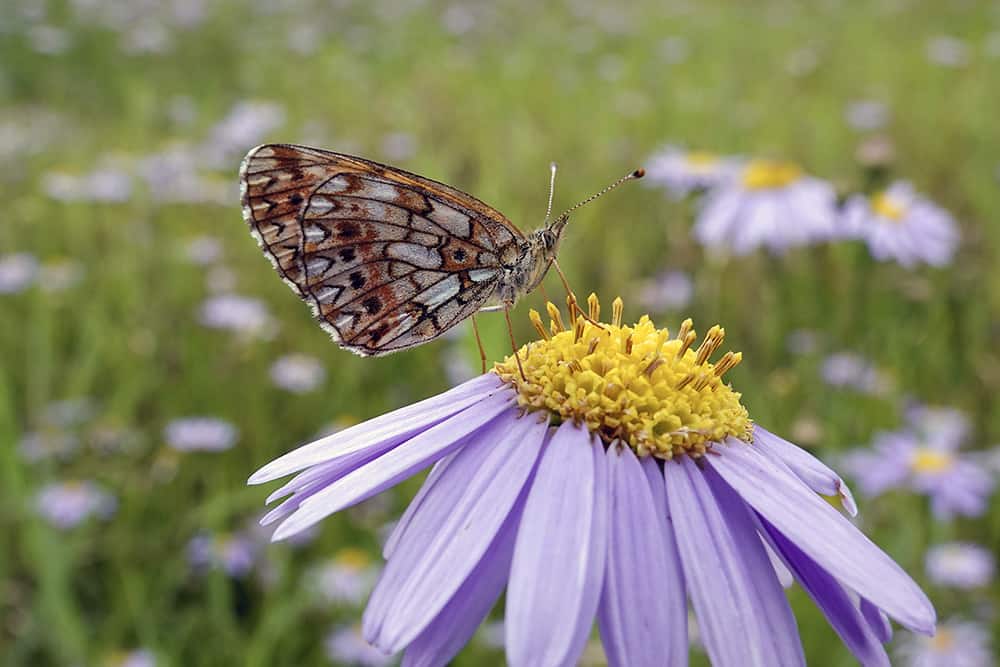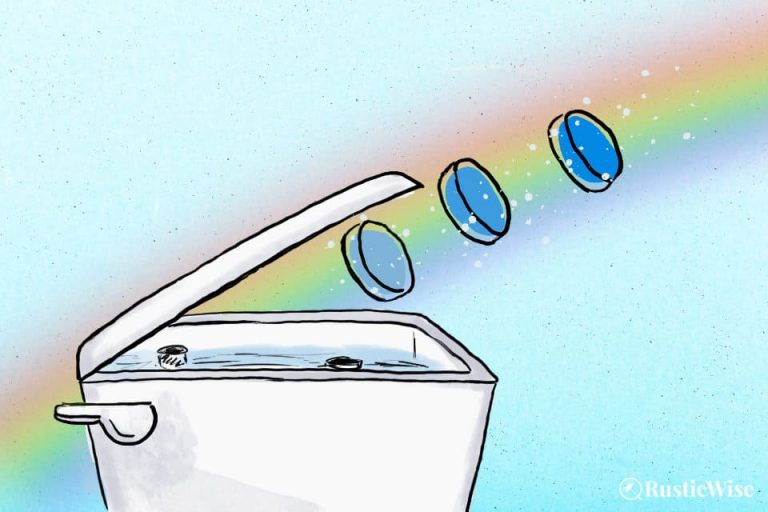9 Easy Tips for How to Mow Your Lawn Safely for Wildlife
Are you tired of keeping a well-manicured lawn? If you’re weary of your weekly mowing sessions, there’s good news—you can save time and help support wildlife at the same time. By cutting down how often you mow, plus learning how to mow your lawn safely for wildlife, you can achieve a win-win for your time management and garden wildlife.
When most people think of lawn management, lawn weeds come top of mind. However, we often forget that our urban lawn, big or small, is an important habitat for local wildlife. Butterflies, bees, invertebrates, birds, and even some small mammals are all drawn to natural, wildlife-friendly lawns.
Pollinators, in particular, are in decline around the world. This is a plight that not only affects nature’s delicate balance, but also directly impacts crop production and the ability to feed people.
Luckily, there are a few simple things you can do at home to turn your lawn into a wildlife habitat.
The problem with well-manicured lawns
While tidy green lawns look attractive, they come at a price for wildlife species.
Short, mowed grass doesn’t exactly create a welcoming environment for the average insect, pollinator, or bird. It provides little to no cover or shelter. There’s a lack of diversity in plant species. And there’s no food in the way of natural forbs (flowering herbaceous plants that offer seeds).
Did you know that in the United States alone, 40-55 percent of urban land in the country is made of lawn space? This equates to roughly 63,243 square miles (163,799 square kilometers) of land.¹ That is a LOT of space.
Sadly, many manicured lawns are so-called “green deserts” (devoid of wildlife).
If part of your lawn care routine is to do a weekly mow, you may want to consider letting your turf grow out a bit. Long grass in all or part of your lawn may be a simple and easy solution to inviting species back to your yard.
9 Tips for how to mow your lawn safely for wildlife
So, how exactly do you protect wildlife when mowing your lawn? I’ve gathered a few tips via Habitat Network on how to make your lawn more wildlife-friendly:
1: Inspect
Do a quick inspection first. Before mowing, do a quick walk around your lawn to ensure no small creatures, such as nesting birds, are in its midst.
The safety and well-being of little creatures is not something homeowners usually consider when mowing the lawn. It is, however, a cornerstone of wildlife-friendly lawn care.
The last thing that you want is to be inadvertently responsible for the demise of a nest of birds or squirrels. So be sure to conduct a swift walk-around before you start up the lawnmower to help ensure that no creatures are in your lawn.
2: Use a reel mower (unmotorized)
Sometimes called a push reel lawn mower, these are the manual mowers without an engine. So no gas required!
If you’re able to use a manual push mower rather than a gas or electric mower, please do so. This allows you to slow down while mowing to provide time for animals to escape. It also leaves a smaller carbon footprint.
Besides, the loud roar of a gas-powered mower is enough to frighten away all species of wildlife!
3: Start from the inside-out
To protect any small critters on your lawn, it’s best to start in the middle. Start mowing at the center of your lawn and move outwards.
This provides a potential escape route for critters to run towards the outside. (Starting from the outside-in would drive animals inwards to the center of your lawn.)
Mowing from the center-outwards is especially important if you live on an acreage, or farm where there are ground-nesting birds.
One UK study found that mowing from the inside-out reduced mortality rates in corncrake chicks. When fields were mown from the inside-outwards, 68 percent of chicks escaped. Compare this to only 45 percent who escaped when traditional mowing from the outside-in was implemented.²
If you want to get fancy, this is technically a circle pattern for your lawn. But whether your circles are perfect or wonky doesn’t really matter.
Tip: To ensure your grass grows healthy and upright, it’s important to vary your lawn mowing pattern each time you mow.
4: Leave a border
The next time you mow, leave a border of grass around trees.
A grass border around trees provides a home for wildlife.³ It’s also the perfect spot to introduce flowers which do well with a bit of shade.
Why not try planting a few flower bulbs such as native daffodils, crocuses, and snowdrops? These spring flowers are an important source of nectar for bees.
You may also consider leaving a border of longer grass along fences, a common home for spiders, frogs, and toads.
Tip: If you have bird feeders in your yard, keep the grass around that area mowed. Long grasses around bird feeders provide a potential hiding place for predators.
5: Ditch the weed-whacker
Unruly edges? The next time you trim edges, try swapping your weed whacker with a pair of sharp gardening or pruning shears.
Using pruning shears forces you to slow down and examine long grasses for critters before trimming.
6: Consider mown paths
Rather than mowing your entire lawn, consider letting certain sections grow longer and having a few mown paths instead.
The mown paths provide a walkway around your yard so you can still enjoy the great outdoors. The areas that you allow to grow (slightly) longer will invite beneficial insects, ground nesting birds, and other small mammals to your yard.

Credit: Vector State
7: Leave (some) weeds alone
Most homeowners try to pluck out all weeds as soon as they pop up. But you might want to go easy on certain weeds (at least in the springtime when they provide nectar for bees).
While you’ll definitely want to get rid of any invasive or noxious weeds such as Canada Thistle (Cirsium arvense), others may contribute to your wildlife habitat.
Weeds such as plantain, clover, dandelions, and daisies attract pollinators. These weeds lay fairly flat and are passed over by the lawnmower, anyway.
If you can resist pulling them out, let these grow naturally. The bees will thank you.
8: Leave grass clippings
Do you bag your grass after mowing?
There are so many reasons to leave grass clippings on your lawn after mowing. Not only does it contribute to a healthier and greener lawn, it also uses fewer plastic garbage bags and requires less work.
Tip: If your grass clippings are too long, it’s best to bag them up and add them to your backyard compost, or use as mulch instead (so long as no chemicals were used!).
9: Ditch the chemical fertilizers, herbicides, and pesticides
It goes without saying that if you’re still using chemicals on your lawn, it’s time to ditch’em!
Pesticides are not only harmful to plants, they also cause lasting damage to bees and other pollinators.
If pesticides are applied when bees are active, it may kill them. (If chemical pesticides must be used, try to apply it when bees are not active.)
It has also been found that exposure to some pesticides harm a bee’s navigational and foraging abilities. Bees may get lost and not find their way back to the hive. They may have trouble identifying proper flowers when foraging for food.⁴
If you’re already going “bagless” when you mow and leaving the grass clippings on the lawn, you’ll find a reduced need for weed and pest control.
If you require some sort of lawn treatment, consider natural solutions over chemical-based ones.

Checklist for a wildlife-friendly lawn
How does your urban lawn fare in terms of being wild-life friendly?
How a wildlife-friendly lawn benefits you
So what’s in it for you, the homeowner? There are a number of reasons how you could benefit from a more natural and diverse landscape:
- Less time spent mowing: The obvious example is more leisure time spent doing what you want. Imagine a few free weekends where you don’t need to mow the lawn. While you probably don’t want to ditch your lawnmower, mowing every two or three weeks would still keep grass height manageable while inviting in wildlife.
- Reduce the amount of weeds and pests: A 15-year study conducted in North America and Europe found that urban lawns cut more frequently have reduced plant and animal diversity, plus an increase in the number of weeds and pests.⁵ If you have a garden, it will also benefit from a more diverse ecosystem that controls pests naturally.
- Fewer allergies: Ragweed is a common allergenic weed that’s prolific throughout North America. It also thrives in lawns that are frequently mowed. By reducing the frequency of mowing, fewer ragweed plants are around helping to reduce the amount of pollen in the air. The Canadian province of Quebec found that ragweed-based allergies cost $155 million each year.⁵
- Improved food and plant production: While having a more natural landscape obviously helps the plight of local pollinators, these critters in turn also help pollinate many of the foods we eat. This includes apples, squashes, vanilla, and almonds to name only a few.
Tip: It’s a common lawn mowing mistake to cut grass too short. This is known as “scalping.” Grass that’s too short makes it easier for weeds and pests to invade your lawn.
Small steps make a difference
While it takes some time getting used to longer grass and a lawn that’s not perfectly pristine, the local wildlife will thank you. It’s time to start thinking of our lawns as an important habitat for bees, butterflies, birds, invertebrates, and small mammals—and not merely an ornamental patch of grass.
Related questions
Why shouldn’t you cut your grass short?
Cutting your grass too short is often called “scalping.” Grass that’s shorn too short doesn’t have the time or energy to develop a deep and healthy root system. Instead, it focuses mostly on growing its blades. Short lawns are also more prone to weeds. So let that grass grow a bit longer.
How do you turn your lawn into a wildflower meadow?
One of the first steps in converting your grass lawn into a natural meadow is to simply mow less often, and set your mower a bit higher. Springtime is a good time to let your lawn grow “wild” as it’s an important feeding time for pollinators. You may see clover or wild daisies popping up. Try planting some spring bulbs, such as daffodils or crocuses.
You might want to mow a few paths througout your yard to keep your landscaping looking sharp.
Should you always cut your grass in the same direction?
No, it’s a good idea to change your mowing patterns. Grass that’s repeatedly mown in the same direction will develop bare patches from friction with the mower’s tires. It may also appear flatter in some areas.
👉 If you like this post, see our complete Indoor Growing Collection.
Would you like more timeless tips via email?
Fun tips to help you live an independent, self-sustaining lifestyle. Opt-out at any time.


References
- Learn, Joshua Rapp (21 August 2015). “Being a Lazy Lawnmower Improves Bee Habitat,” The Wildlife Society. Accessed September 2022.
- Conservation Evidence, Use mowing techniques to reduce mortality, https://www.conservationevidence.com/actions/698. Accessed September 2022.
- Natural History Museum, How to grow a lawn that’s better for wildlife, https://www.nhm.ac.uk/discover/how-to-grow-a-better-lawn-for-wildlife.html. Accessed October 2020.
- Brunet, Johanne (26 June 2019). “Pollinator Decline: Implications for Food Security & Environment,” Scientia. Accessed September 2022.
- Barkham, Patrick (19 December 2019). “Lawn-mowing reduction can help wildlife, says study,” The Guardian. Accessed September 2022.

Author: Theresa Tesolin
Theresa is co-founder of RusticWise. She helps people unleash their inner DIY spirit by encouraging them to get dirty and make or grow something from scratch.









